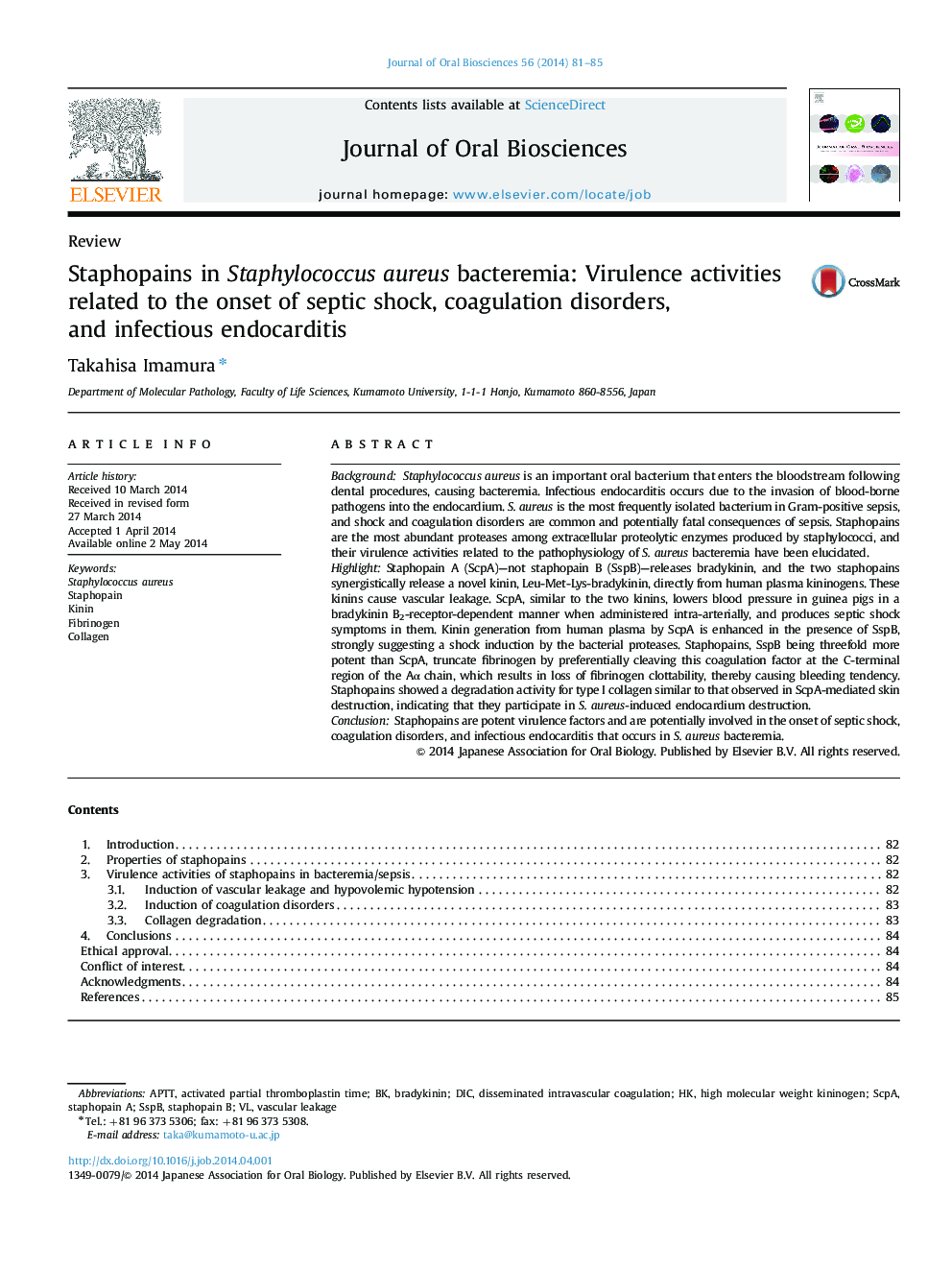| Article ID | Journal | Published Year | Pages | File Type |
|---|---|---|---|---|
| 2776827 | Journal of Oral Biosciences | 2014 | 5 Pages |
BackgroundStaphylococcus aureus is an important oral bacterium that enters the bloodstream following dental procedures, causing bacteremia. Infectious endocarditis occurs due to the invasion of blood-borne pathogens into the endocardium. S. aureus is the most frequently isolated bacterium in Gram-positive sepsis, and shock and coagulation disorders are common and potentially fatal consequences of sepsis. Staphopains are the most abundant proteases among extracellular proteolytic enzymes produced by staphylococci, and their virulence activities related to the pathophysiology of S. aureus bacteremia have been elucidated.HighlightStaphopain A (ScpA)—not staphopain B (SspB)—releases bradykinin, and the two staphopains synergistically release a novel kinin, Leu-Met-Lys-bradykinin, directly from human plasma kininogens. These kinins cause vascular leakage. ScpA, similar to the two kinins, lowers blood pressure in guinea pigs in a bradykinin B2-receptor-dependent manner when administered intra-arterially, and produces septic shock symptoms in them. Kinin generation from human plasma by ScpA is enhanced in the presence of SspB, strongly suggesting a shock induction by the bacterial proteases. Staphopains, SspB being threefold more potent than ScpA, truncate fibrinogen by preferentially cleaving this coagulation factor at the C-terminal region of the Aα chain, which results in loss of fibrinogen clottability, thereby causing bleeding tendency. Staphopains showed a degradation activity for type I collagen similar to that observed in ScpA-mediated skin destruction, indicating that they participate in S. aureus-induced endocardium destruction.ConclusionStaphopains are potent virulence factors and are potentially involved in the onset of septic shock, coagulation disorders, and infectious endocarditis that occurs in S. aureus bacteremia.
